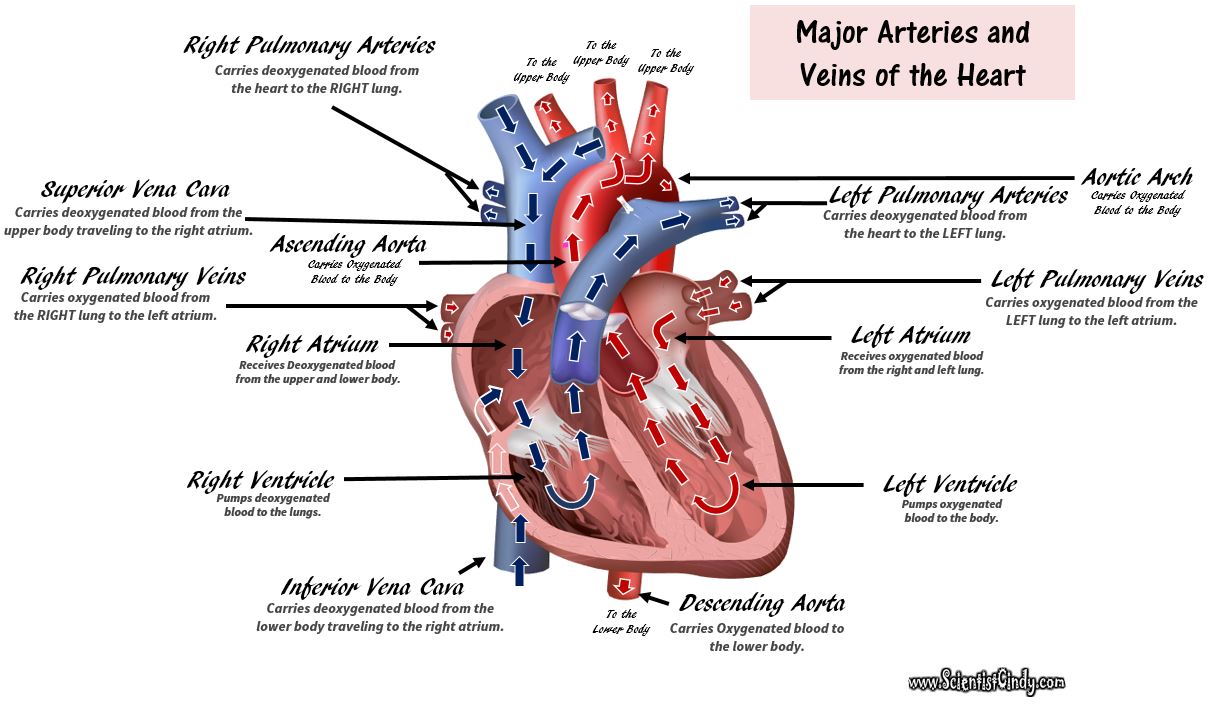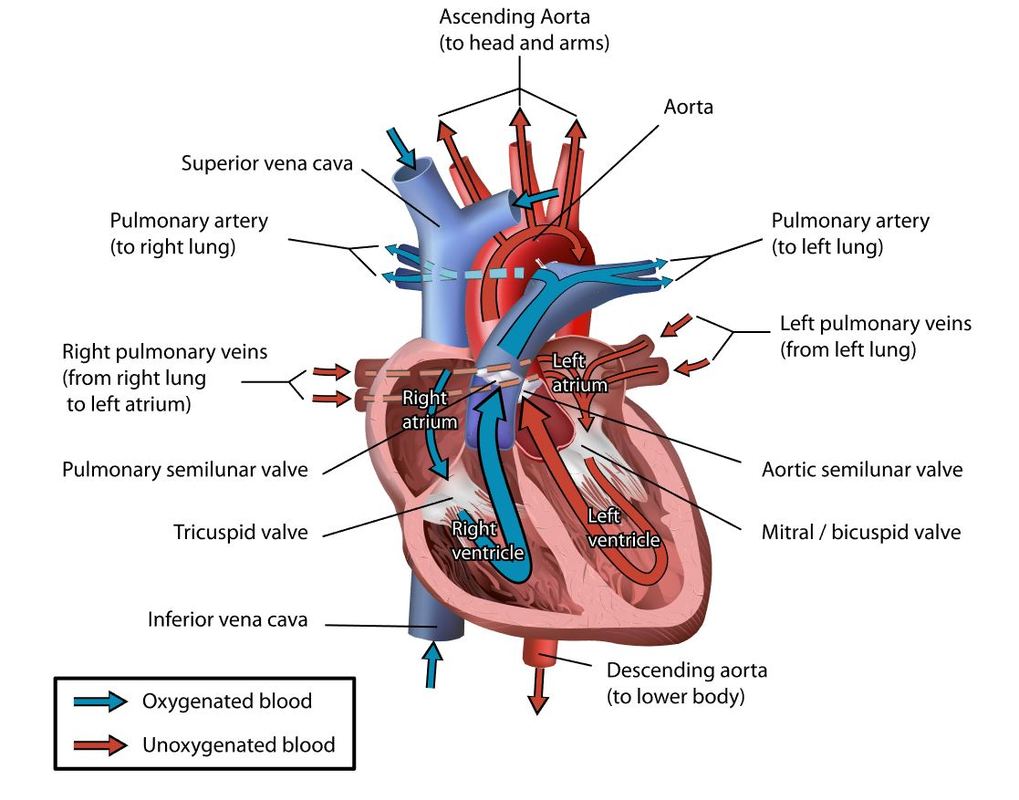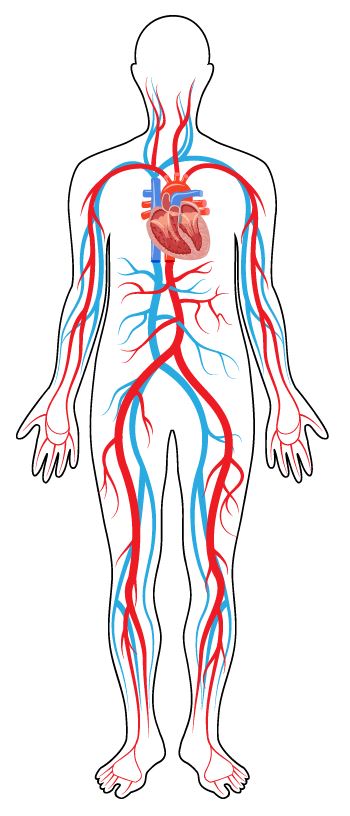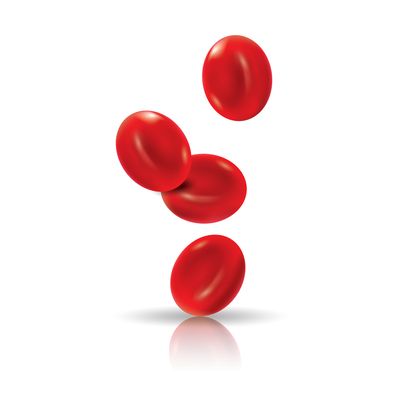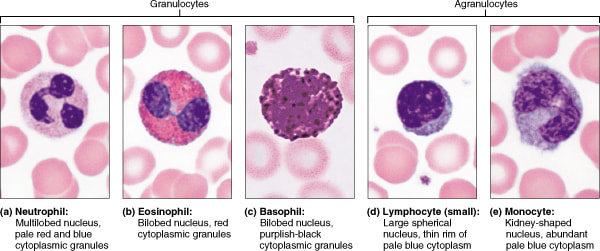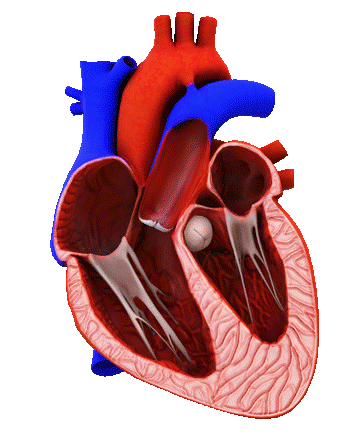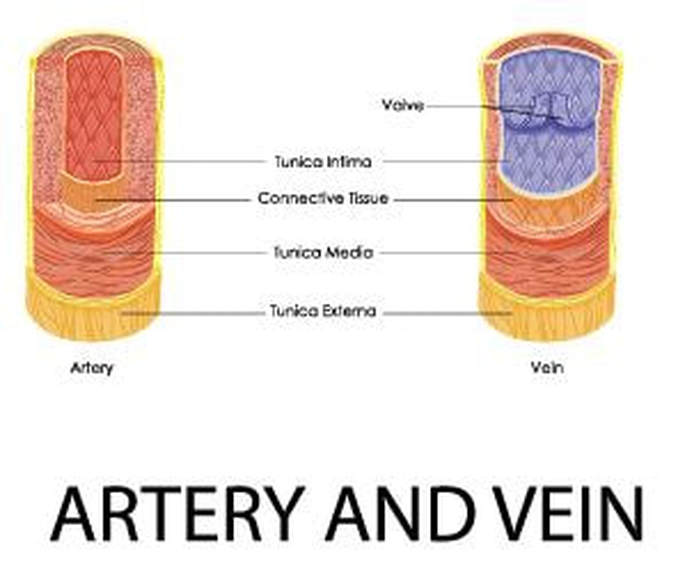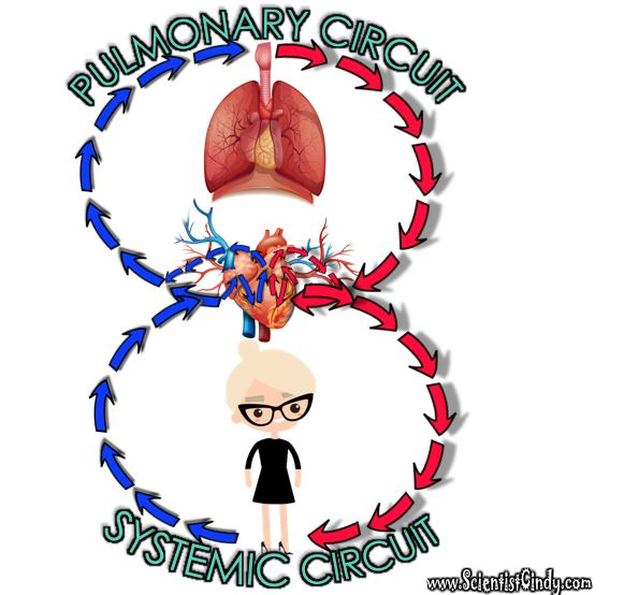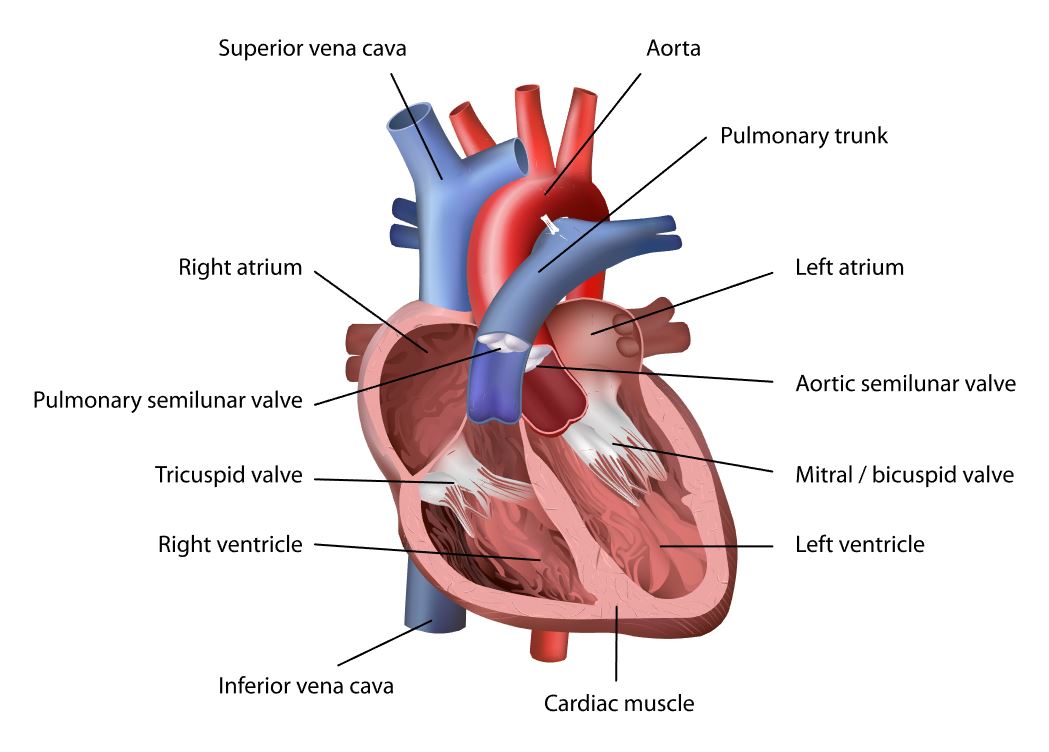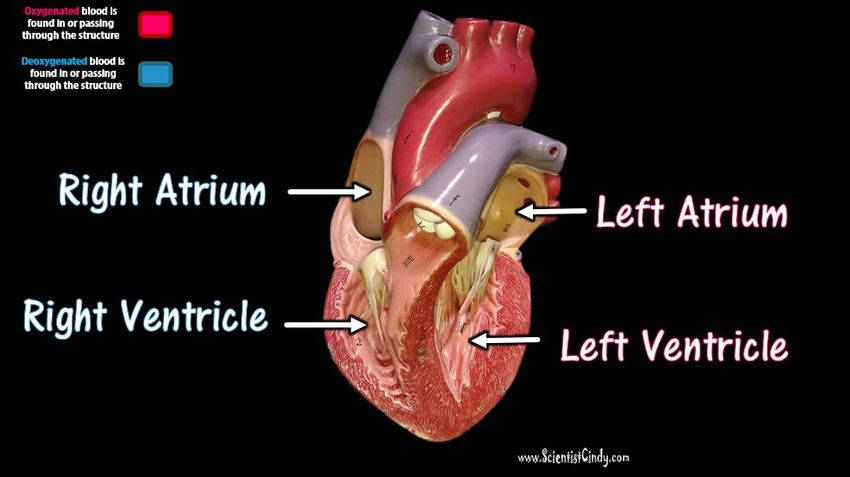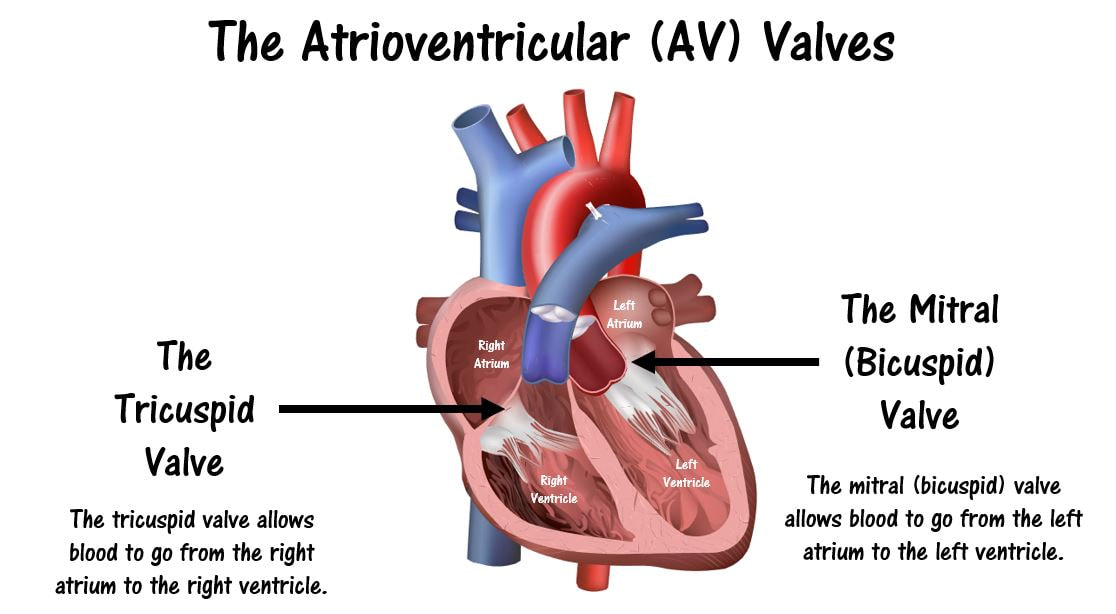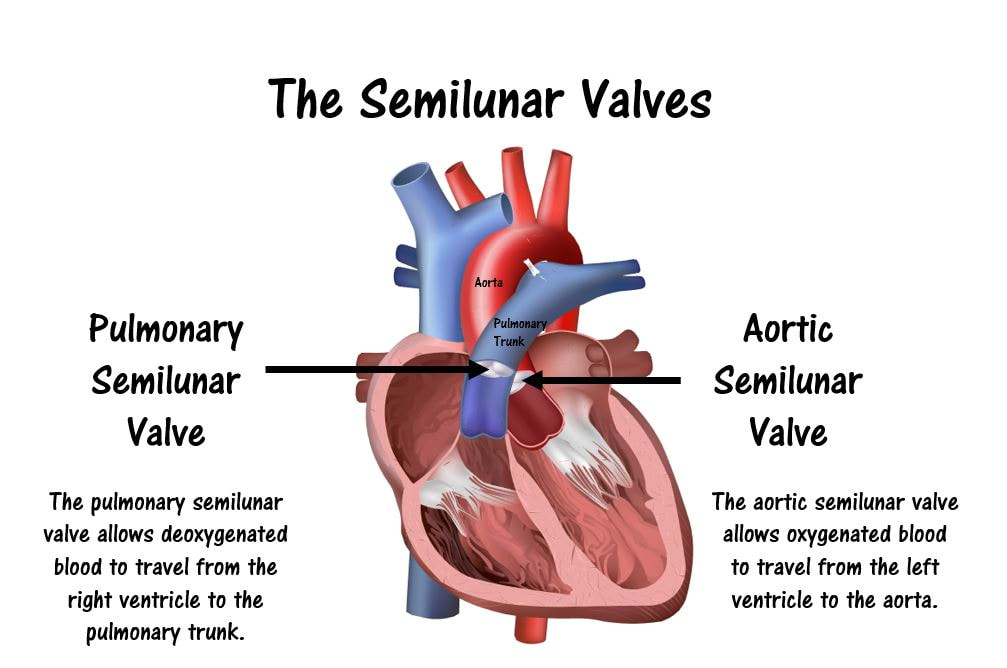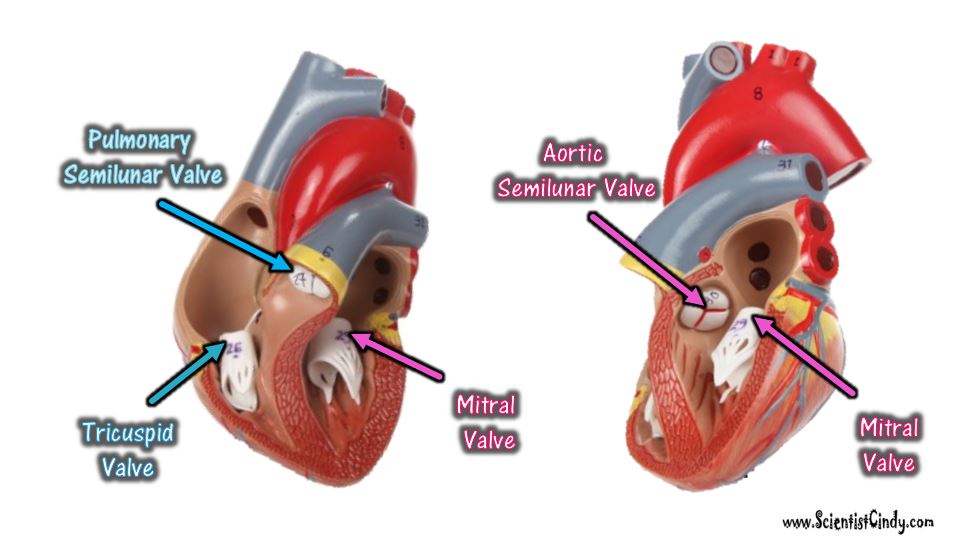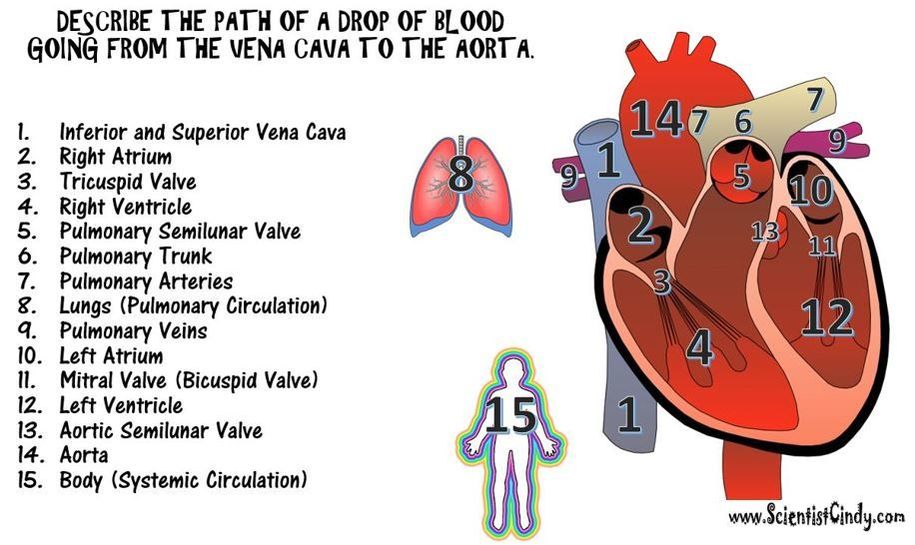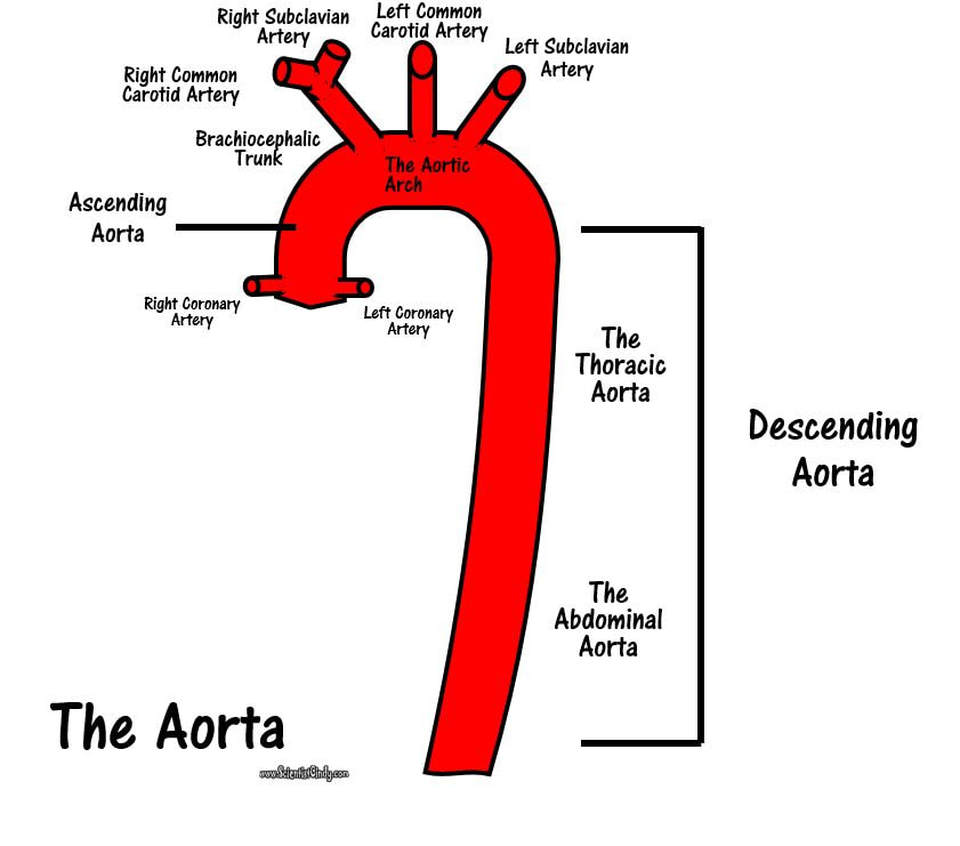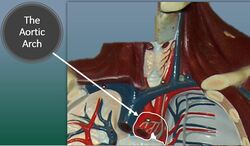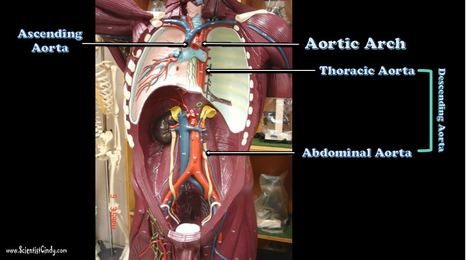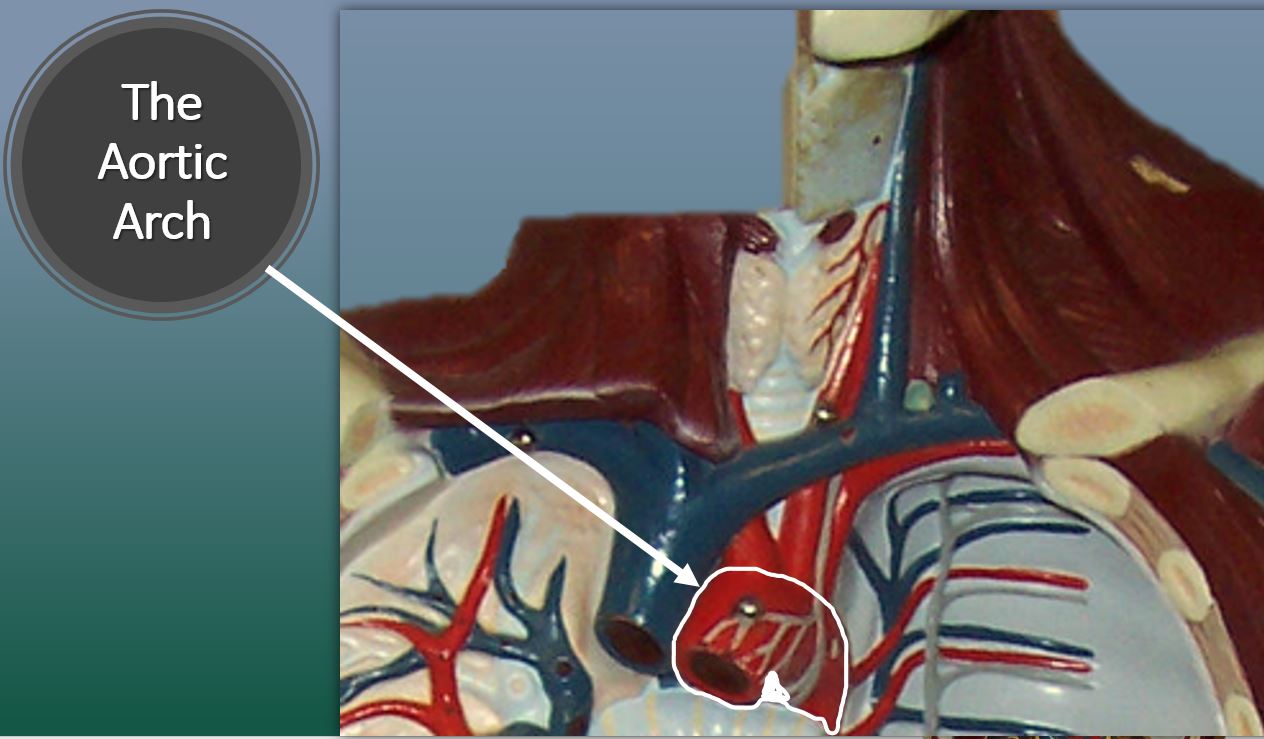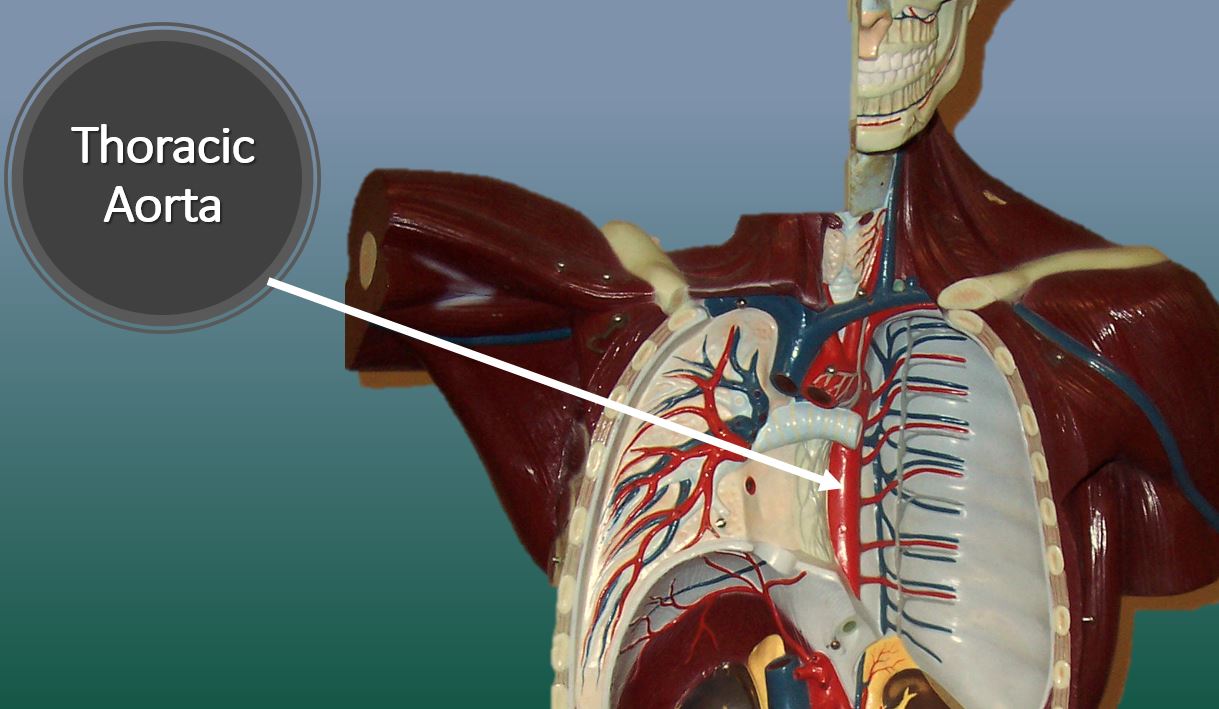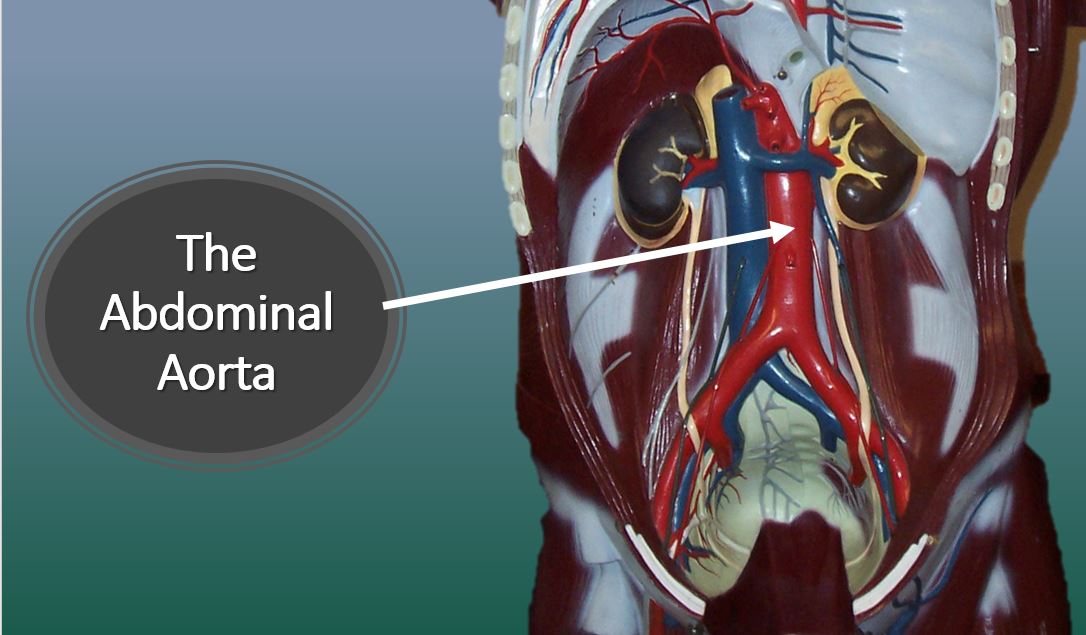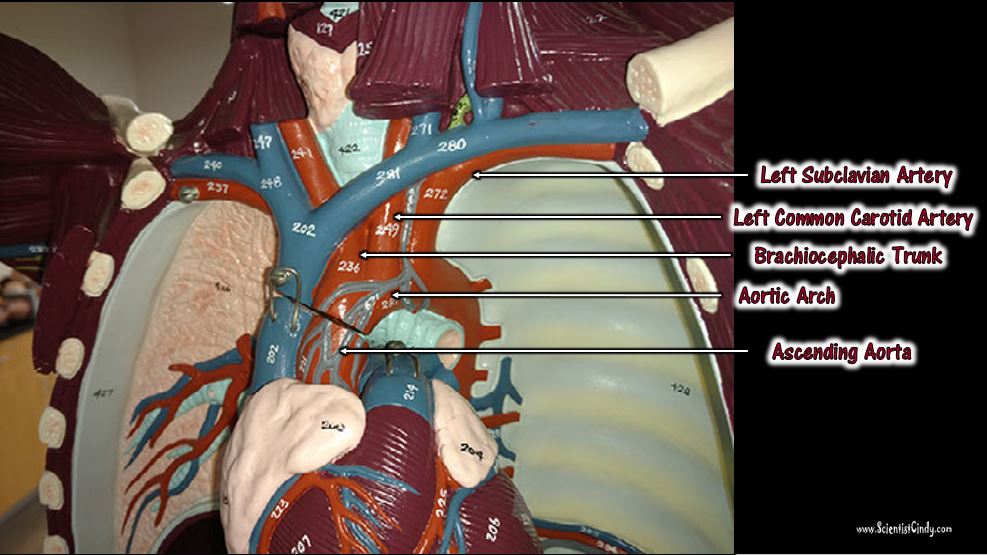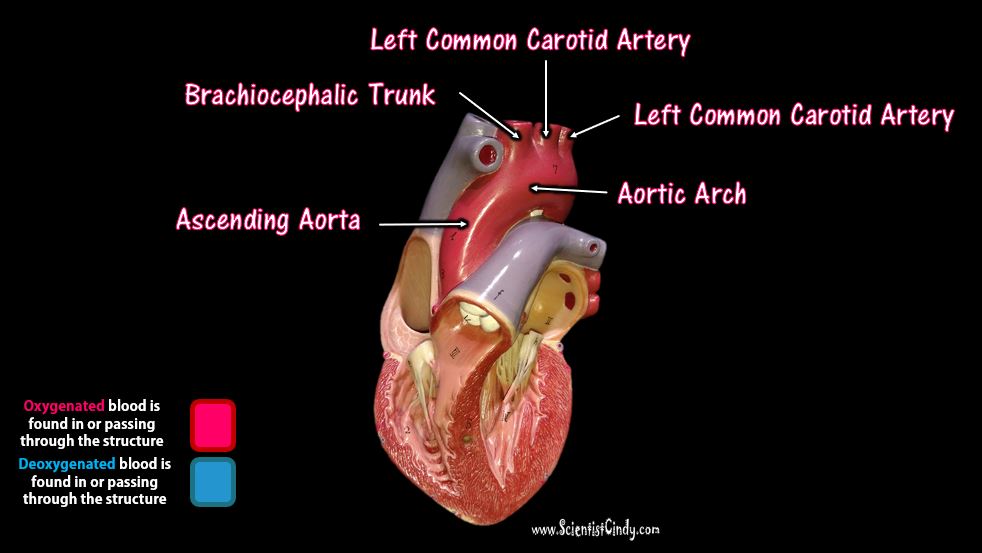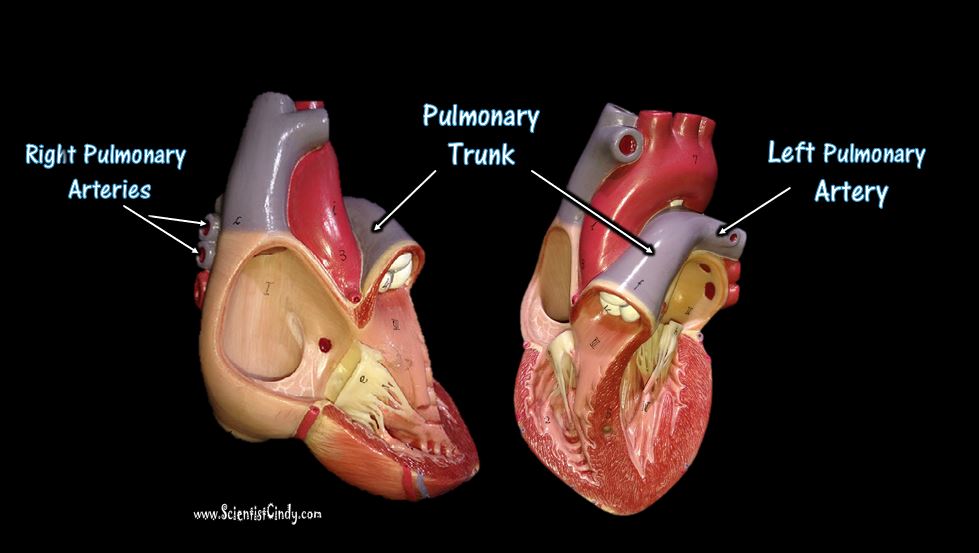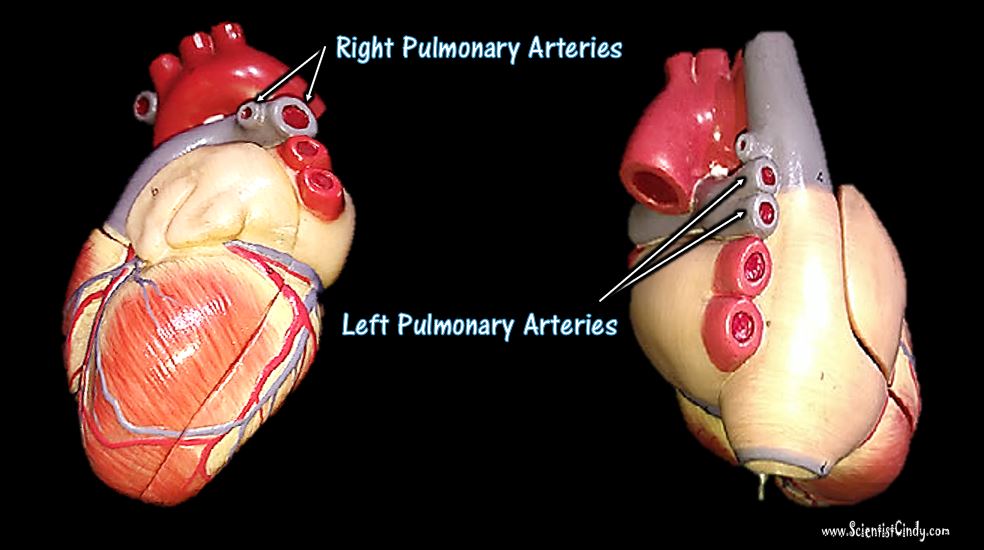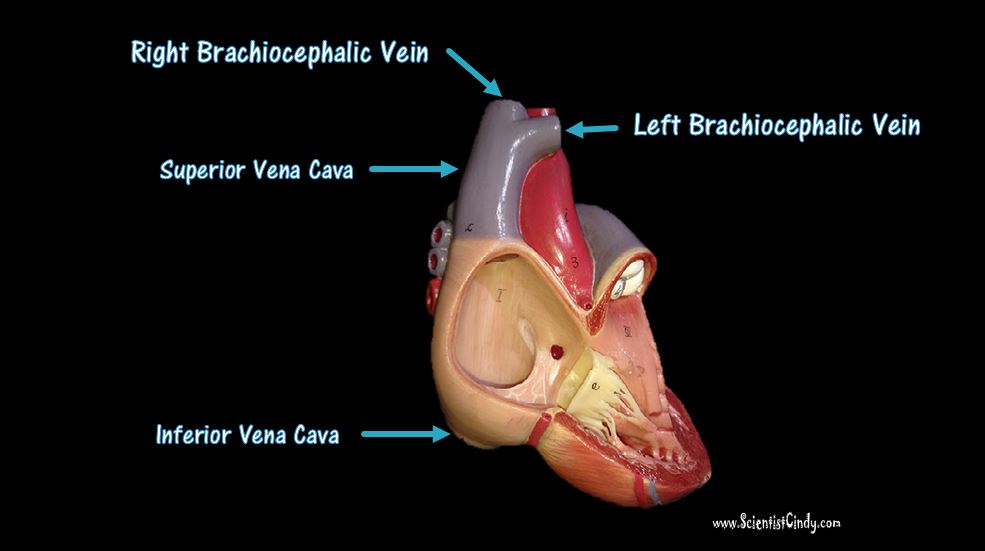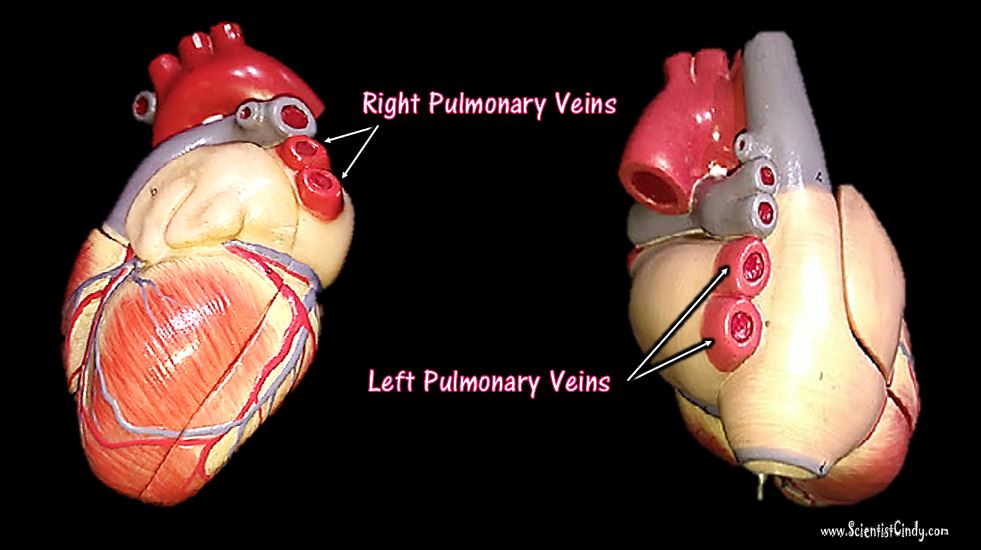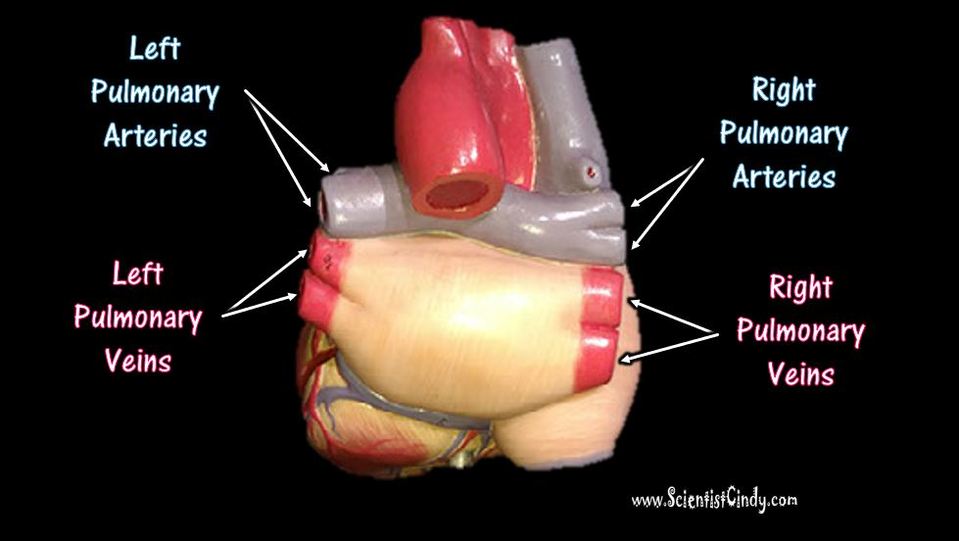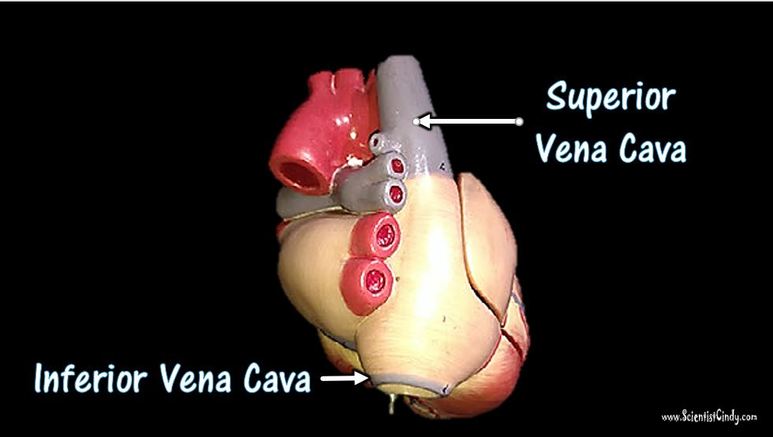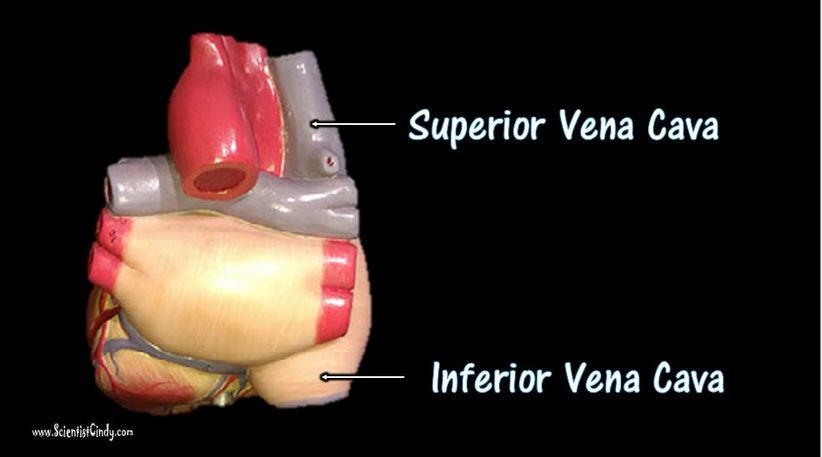INTRODUCTION TO THE CIRCULATORY SYSTEM
The Components of the Circulatory System
Before we begin, let's start with some basic concepts and definitions. Let's first discuss WHAT the circulatory system IS and WHAT the circulatory system DOES for us.
The function of the circulatory system is to transport the blood throughout the body.
The circulatory system has 3 components:
The function of the circulatory system is to transport the blood throughout the body.
The circulatory system has 3 components:
- The heart - functions to pump blood throughout the body by creating a pressure gradient.
- The blood vessels - the network of passage ways for the blood to travel through.
- The blood - carries the substances that are being transported to and from the cells.
Components of the Blood
Overview of the Circulatory System
A Visual Animation of How the Blood Flows Through the Chambers of the Heart and the Pulmonary and Systemic Circuits of the Circulatory System
The Arterial Pathways
Pathway from the Heart to the Brain via the Carotid Arteries
Tour of the Blood Vessels
|
|
|
Veins --> Pathway from the Brain to the Heart via the Jugular Veins |
Pathways to and from the Kidneys |
The proper name for Red Blood Cells is Erythrocytes. Red blood cells are short-lived and do not have a nucleus. The main function of the erythrocytes is to
- transport oxygen to the cells of the body
- take away carbon dioxide from the cells of the body
THE WHITE BLOOD CELLS (LEUKOCYTES)
White blood cells help to protect your body against infection and fight disease. Unlike the red blood cells, white blood cells DO have a nucleus.
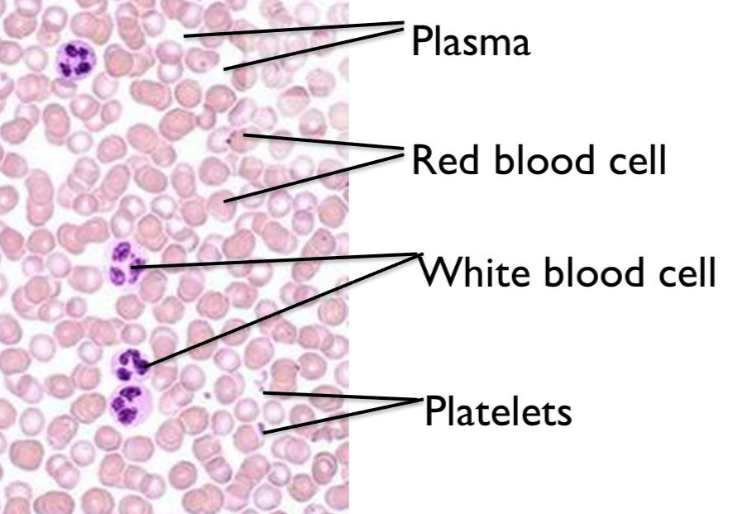
The red blood cells are rather easy to spot on slides, because they do not have a nucleus! Red blood cells (like all blood cells) form from hematopoietic stem cells in the bone marrow. As they mature, they lose their nucleus, their DNA and many of their organelles.
The white blood cells retain their nuclei as can be seen with the purple hematoxylin nuclear stain. The white blood cells function in different ways to protect you from infection and disease.
The platelets appear as small darkly stained fragments on the slide. These are blood clotting factors.
The white blood cells retain their nuclei as can be seen with the purple hematoxylin nuclear stain. The white blood cells function in different ways to protect you from infection and disease.
The platelets appear as small darkly stained fragments on the slide. These are blood clotting factors.
The Vessels of the Circulatory System
|
ARTERIES = Arteries are the blood vessels that are carrying blood AWAY FROM the heart. The arteries have high pressure and thick arterial walls. |
VEINS = Veins are the blood vessels that are carrying blood TOWARDS the heart. The veins have thin walls and low pressure since they are further away from the heart. For this reason, the veins have one-way valves that prevent the blood from flowing backward (see illustration).
|
|
Although most veins are shown in BLUE and most arteries are shown in RED, the color IS NOT an indication of whether or not it is an artery or a vein! Instead, the coloring means the following:
The RED coloring indicates that the blood carried in that vessel is OXYGENATED. The BLUE coloring indicates that the blood carried in that vessel is DEOXYGENATED. |
|
The Pulmonary and Systemic Loops of the Circulatory System
The Chambers of the Heart
The heart has 4 chambers;
- The Right Atrium
- The Right Ventricle
- The Left Atrium
- The Left Ventricle
The word "atrium" comes from the Latin word for "entrance". The atria (plural for atrium) of the heart function to RECEIVE blood.
The right atrium of the heart is the chamber that receives deoxygenated blood from the body. The left atrium of the heart is the chamber that receives oxygenated blood from the lungs.
The word "ventricle" comes from the Latin word for "belly". This origin probably comes from the fact that the ventricles of the heart are the larger, more rounded chambers of the heart. The ventricles receive blood from the atria and the send that blood out of the heart. The ventricles create the "pumping" action of the heart by the rhythmic contraction and relaxation of the cardiac muscle (myocardium). The right ventricle receives the deoxygenated blood from the right atrium and sends that blood out to the lungs to pick up oxygen. The blood picks up oxygen and return to the heart at the left atrium. The left ventricle receives the oxygenated blood from the left atrium and sends that blood out to the body.
The Flow of Blood Through the
Chambers of the Heart
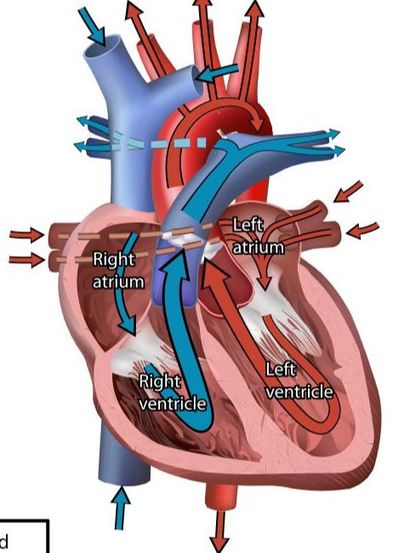
The right atrium receives the deoxygenated blood that has traveled through the body. This blood has a low level of oxygen and a high level of carbon dioxide. This blood also has low pressure since it has traveled a good distance since it got its last "push" from the heart.
This deoxygenated blood from the lower and upper body travels to the right atrium, and then travels to the right ventricle. When the right ventricle contracts, it pushes the deoxygenated blood out of the heart and sends it to the lungs. (This is the pulmonary circuit). As this blood passes by the lungs, it picks up oxygen and gets rid of carbon dioxide.
The oxygenated blood from the lungs then travels back to the heart to get another "push" before it goes to the body (this is the systemic circuit). The left atrium receives the oxygenated blood coming from the lungs. This blood enters the left atrium and then travels to the left ventricle. The left ventricle contracts to push the oxygenated blood out of the heart and to the body in order to deliver oxygen and nutrients to the cells and to pick up unwanted substances like waste and carbon dioxide.
This deoxygenated blood from the lower and upper body travels to the right atrium, and then travels to the right ventricle. When the right ventricle contracts, it pushes the deoxygenated blood out of the heart and sends it to the lungs. (This is the pulmonary circuit). As this blood passes by the lungs, it picks up oxygen and gets rid of carbon dioxide.
The oxygenated blood from the lungs then travels back to the heart to get another "push" before it goes to the body (this is the systemic circuit). The left atrium receives the oxygenated blood coming from the lungs. This blood enters the left atrium and then travels to the left ventricle. The left ventricle contracts to push the oxygenated blood out of the heart and to the body in order to deliver oxygen and nutrients to the cells and to pick up unwanted substances like waste and carbon dioxide.
The Valves of the Heart
The four valves of the heart are as follows:
- The Tricuspid Valve is an atrioventricular (AV) valve that allows for the one-way movement of blood from the right atrium to the right ventricle.
- The Pulmonary Semilunar Valve is a semilunar (SV) valve that allows for the one-way movement of blood from the right ventricle to the pulmonary arteries (which travel to the lungs).
- The Mitral (Bicuspid) Valve is an atrioventricular (AV) valve that allows for the one-way movement of blood from the left atrium to the left ventricle.
- The Aortic Semilunar Valve is a semilunar (SV) valve that allows for the one-way movement of blood from the left ventricle to the aorta (which travel to the body).
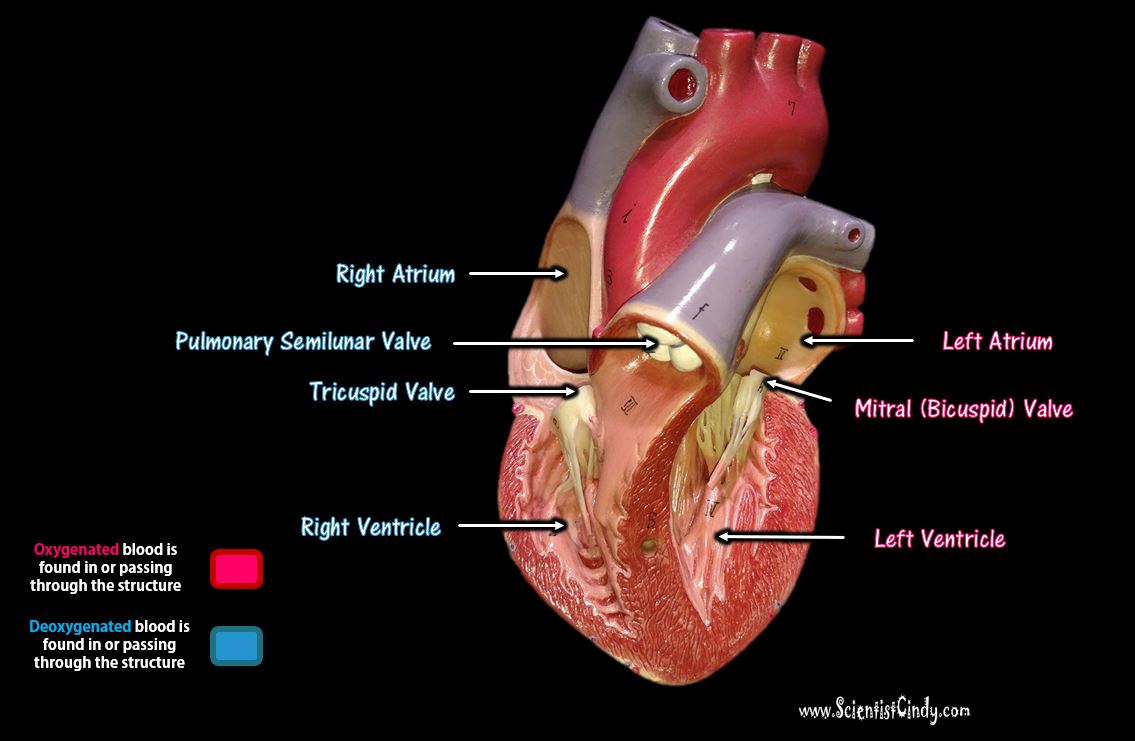
The Flow of Blood Through the Heart INCLUDING THE VALVES
Deoxygenated blood comes from the body and goes to the right atrium. The blood then travels through the TRICUSPID VALVE to get to the right ventricle. Once the right ventricle contracts, this blood is then pumped through the PULMONARY SEMILUNAR VALVE to the pulmonary trunk which splits off to form the right and left pulmonary arteries which will carry the blood to the lungs.
Oxygenated blood comes from the lungs and enters the left atrium. The blood then travels through the MITRAL (BICUSPID) VALVE to the left ventricle. When the left ventricle contracts, the blood is pumped through the AORTIC SEMILUNAR VALVE to the aorta where it will travel to the body.
Deoxygenated blood comes from the body and goes to the right atrium. The blood then travels through the TRICUSPID VALVE to get to the right ventricle. Once the right ventricle contracts, this blood is then pumped through the PULMONARY SEMILUNAR VALVE to the pulmonary trunk which splits off to form the right and left pulmonary arteries which will carry the blood to the lungs.
Oxygenated blood comes from the lungs and enters the left atrium. The blood then travels through the MITRAL (BICUSPID) VALVE to the left ventricle. When the left ventricle contracts, the blood is pumped through the AORTIC SEMILUNAR VALVE to the aorta where it will travel to the body.

